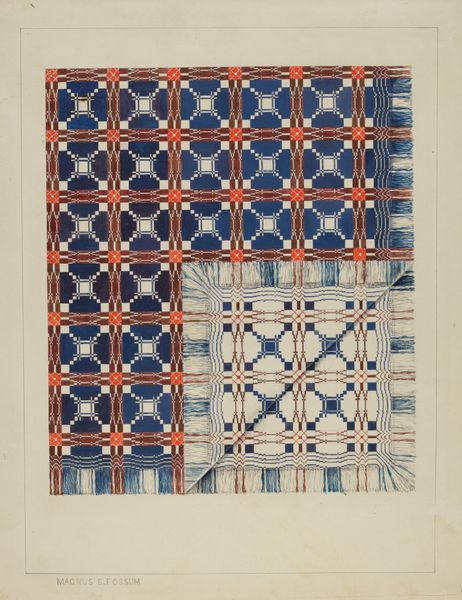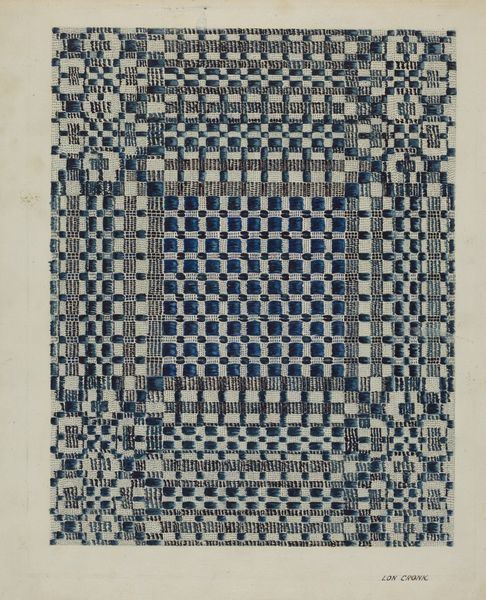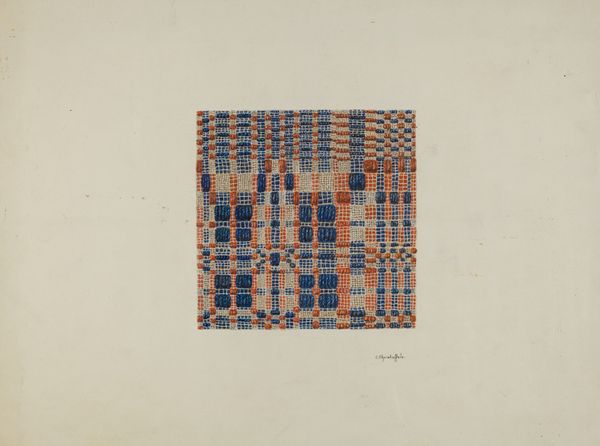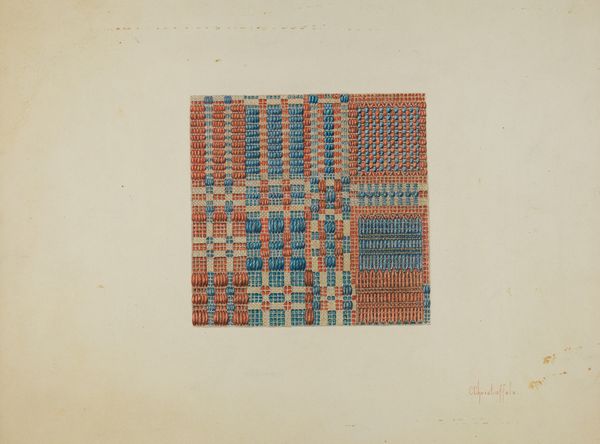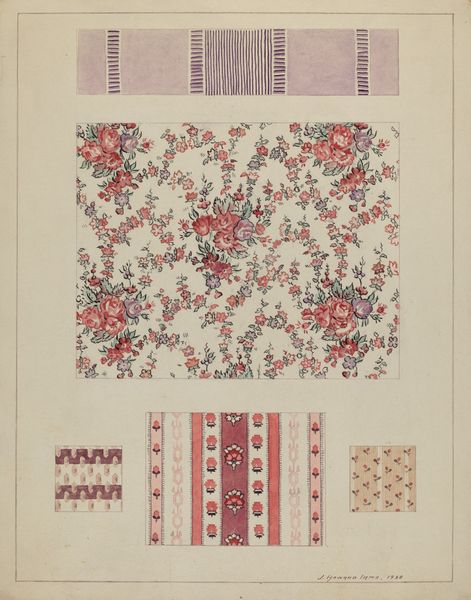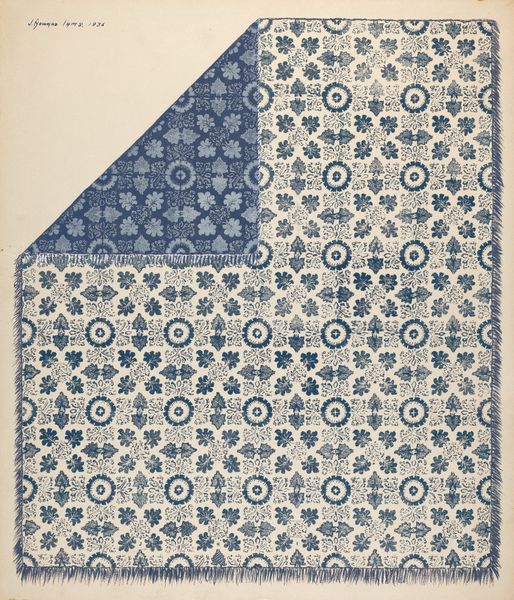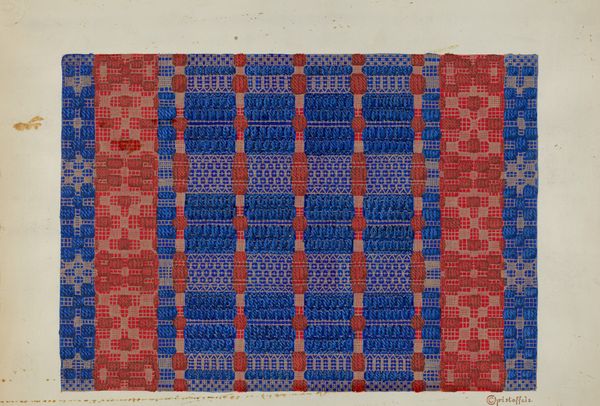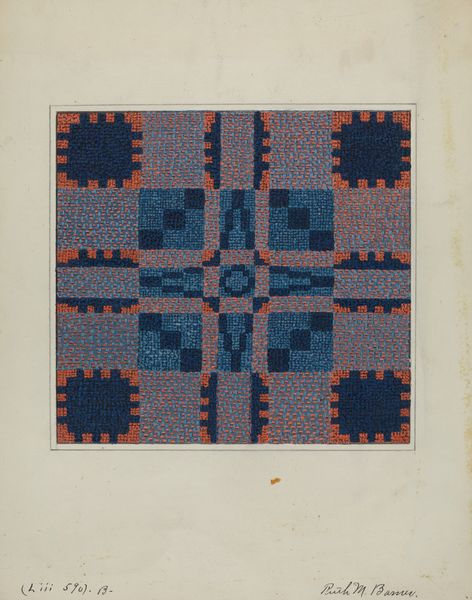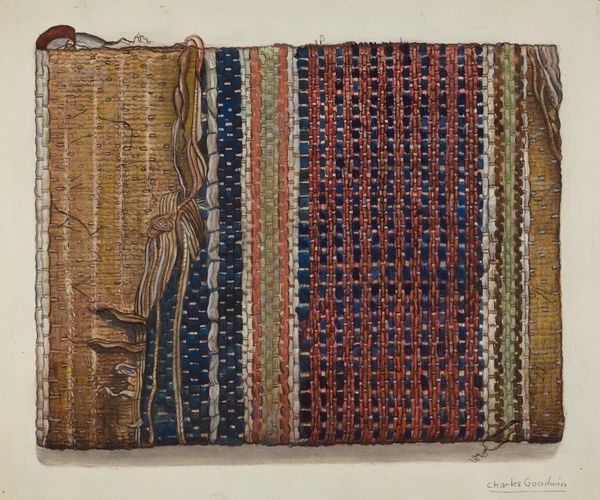
drawing, textile
#
drawing
#
pattern
#
textile
#
geometric
#
textile design
#
decorative-art
Dimensions: overall: 63.5 x 50.9 cm (25 x 20 1/16 in.) Original IAD Object: 90" long; 86" wide
Copyright: National Gallery of Art: CC0 1.0
Curator: Oh, my goodness, talk about being transported. One look at this drawing and I'm instantly tucked into my grandma's guest room on a chilly autumn night! Editor: That's quite the image! For those tuning in, we're looking at a drawing titled "Coverlet," created in 1936 by J. Howard Iams. The medium seems to be textile but with the clear marks of being rendered with a design in mind. What captures your attention? Curator: It's all about the meticulous repetition, isn't it? Those tiny floral motifs nestled within the gridded squares. It whispers of comfort and domesticity, all those handmade promises kept under layers and layers of soft cotton and wool. I bet the act of making one of these brings people back to center and it shows! Editor: Definitely, a counterpoint to factory production. You know, analyzing it purely from a material perspective, you see the grid system first, each section built from individually crafted blocks. These types of weaving patterns also involved a community effort in the olden days of collective production and artistic vision of makers as laborers. Curator: See, that makes me think of the shared stories whispered across the loom. Quilting bees, coverlet commissions - it's like the stories became stitched right into the pattern of the very threads! Do you think, these squares could almost become abstract landscapes or constellations... or am I getting carried away again? Editor: No, not at all. It's fascinating how a seemingly simple textile embodies such complex narratives and processes. Also note, how it represents an attempt to elevate everyday materials to higher value forms, and questions what craft is, versus design is. Curator: Ah, I feel like I want to trace these patterns with my fingers, just feel the artist's own energy flowing out again. Thank you. Editor: Thanks.
Comments
No comments
Be the first to comment and join the conversation on the ultimate creative platform.
